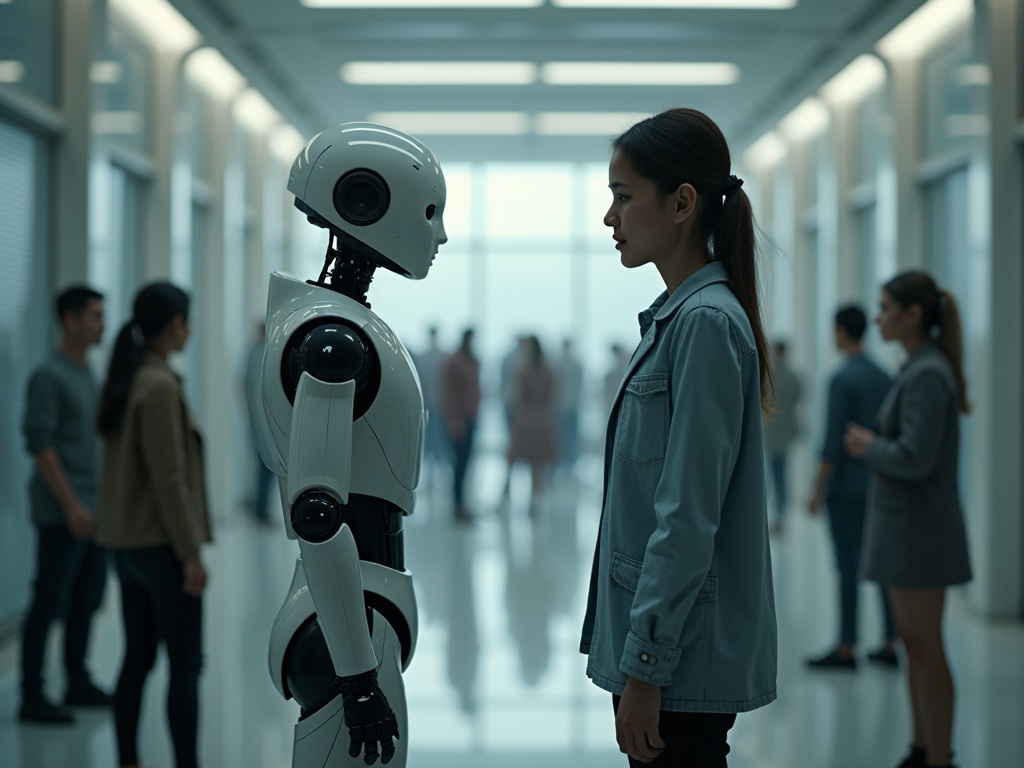The Rise of AI Humanoids: Transforming the Future of Robotics
Introduction
In recent years, the allure of AI humanoids has captivated imaginations and inspired innovations across the globe. As these humanoid robots develop increasing significance in our daily lives and work environments, their transformative potential within various industries cannot be understated. From healthcare to manufacturing, AI humanoids — robotic companions that emulate human interactions — are not just the future; they are an imminent breakthrough in technology trends.
Background
Humanoid robots have long been the protagonists of science fiction stories, but the narrative has shifted towards reality with breakthroughs in AI development and robotic innovation. The evolution from rudimentary mechanical dolls to sophisticated AI humanoids has been driven by pioneering companies like OpenAI and Boston Dynamics. These and other industry giants such as Tesla and Agility Robotics are at the forefront, propelled by substantial investments betting big on a lucrative future of robotics. Just as the assembly line changed manufacturing, AI humanoids are poised to revolutionize industry dynamics on a similar scale.
The remarkable journey of these innovations can be traced back to the symbiotic relationship between machine learning systems and more responsive and durable hardware. Historical setbacks of erratic movements and limited autonomy are being dismantled, paving the way for humanoid robots that mirror human agility and decision-making.
Trend
Currently, the technology trends surrounding AI humanoids showcase intense competition among tech firms striving to outpace each other in the provision of advanced AI assistants. These robots are increasingly capable of executing intricate daily tasks, from way-finding to customer interactions in various sectors. According to Bloomberg, investing in humanoid robotics is becoming increasingly viable, with the market anticipated to expand from a $5 billion industry to a potential $5 trillion colossus by 2050 source.
This fervor is mirrored in the words of leaders like Sam Altman of OpenAI, who foresees a future where \”people would soon be walking down the street and see seven robots walk past you doing this, or whatever.\” The investment surge and consequent race for dominance highlight the burgeoning demand for humanoids, particularly as potential solutions for labor shortages in various sectors.
Insight
The bridge between aspiration and actuality in AI humanoid development lies in ongoing technological advancements. The integration of high-performance processors, improved sensory equipment, and adaptive machine learning algorithms are dismantling barriers of previous iterations. Imagine a scenario similar to how the smartphone revolution transformed communication—AI humanoids are poised to redefine interactions across industries, from personalized customer service bots to intelligent manufacturing operatives capable of learned decision-making.
As obstacles such as battery life and communication latency recede, the potential applications become vast. Humanoids are not just mechanical workers but entities integrating into societal frameworks, tailoring responses and behaviors based on contextual awareness and human interaction paradigms.
Forecast
Speculating on the years ahead, AI humanoids are expected to emerge as integral components of smart cities by 2025, evolving from mere novelty into necessity. The implications extend beyond industrial applications; they highlight a growing shift in labor dynamics and employment trends. Much like the rise of the internet, which initially faced skepticism but became indispensable, humanoid robots will redefine workforce compositions and industry standards.
As automation and AI integration become increasingly prevalent, potential job displacement looms, prompting sectors to recalibrate human roles to areas requiring uniquely human cognitive abilities and emotional intelligence. Meanwhile, the future of robotics lies in crafting new opportunities and fostering a hybrid human-machine collaboration that challenges traditional business landscapes.
Call to Action
In the rapidly evolving realm of robotic innovation, staying informed about AI humanoids isn’t just about technological curiosity—it’s about preparation. This transformation in technology trends urges both businesses and individuals to consider the impacts of AI assistants and humanoids in reshaping industries. By embracing these changes, we can proactively influence how such developments might affect our professional and personal lives.
Explore how these AI humanoids could redefine your world, and prepare for a future where robots walking among us is not just foreseen, but realized!
Explore further with Wired.
